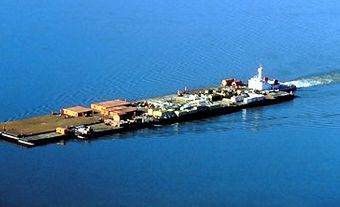Transportation Agencies
The 2 major categories of government activities in transportation are administration and development of public policies, which includes the regulation of transport activities and the investment and operation of transport services and facilities. These responsibilities are allocated directly to the Department of Transport as well as to specialized government agencies and autonomous bodies.
Federal Agencies
TRANSPORT CANADA was created as the Department of Transport in 1936 by the amalgamation of the Department of Railways and Canals, the Department of Marine and the Civil Aviation Branch of the Department of National Defence. Transport Canada's mandate is to ensure that the Canadian transportation system is safe and environmentally sustainable. The government agency monitors all aspects of the system and recommends improvements as required to protect life, property and the environment. The agency is responsible for aviation system safety, commercial aviation, air regulation enforcement, aerodrome safety and the regulation of air navigation systems and airspace; shipping activities in Canadian waters; monitoring the operation and maintenance of the railways system; monitoring road and motor vehicle safety; and ensuring emergency preparedness.
Transport Canada works with partners in industry and the government to fulfil its mandate. Nav Canada, a not-for-profit corporation, is responsible for Canadian air navigation services. Transport Canada's Marine Safety Directorate regulates marine transportation and the inspection of foreign and domestic vessels in Canadian waters. Information on vehicle defects and recalls is issued quarterly in Transport Canada reports. The Canadian Transport Emergency Centre provides vital information to emergency personnel responding to accidents involving dangerous goods. Other agencies work with Transport Canada to handle marine search and rescue; service-related complaints about air carriers, railways, shippers and accessible transportation; road repair; accident investigations involving air, marine, rail and pipeline transport; issuing advisories concerning travelling conditions; and conducting transportation research.
Provincial Agencies
With the exception of BC and Ontario, which have operated provincial railways, provincial involvement in transportation was initially restricted to the construction and maintenance of highways and highway-traffic regulation. Subsequently the range of provincial interests and activities has expanded and the highway departments have been reorganized as transport departments or ministries (often with added responsibilities for communications). At present, provincial transport departments have both the policy administration and co-ordination role as well as direct-investment, operating and regulatory functions. They are also involved in the planning and financing of urban transport. Economic regulations of transport activities under provincial jurisdiction (road transport) are administered by quasi-judicial regulatory commissions or boards. The comprehensiveness of regulations varies greatly between the provinces.
Special intergovernmental committees have been created that operate both at the ministerial and the official (ie, civil-service) levels to deal with provincial and federal transport policies and activities. They perform consultative and information-exchange roles. In general, such committees are organized regionally, and at present no national structure exists.

 Share on Facebook
Share on Facebook Share on X
Share on X Share by Email
Share by Email Share on Google Classroom
Share on Google Classroom

